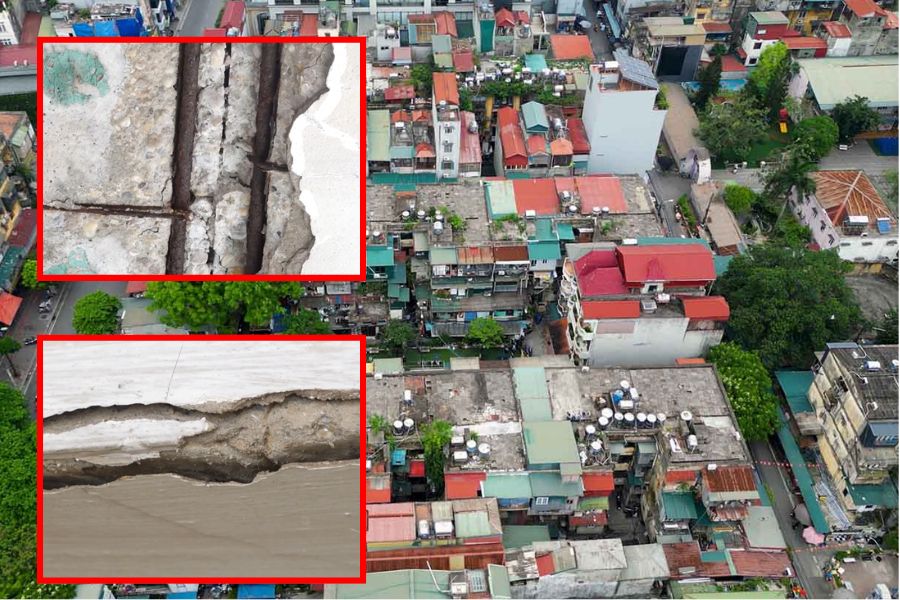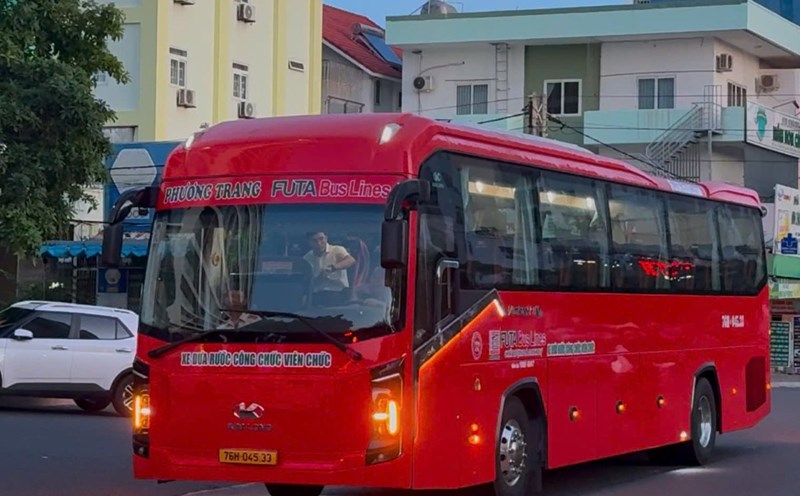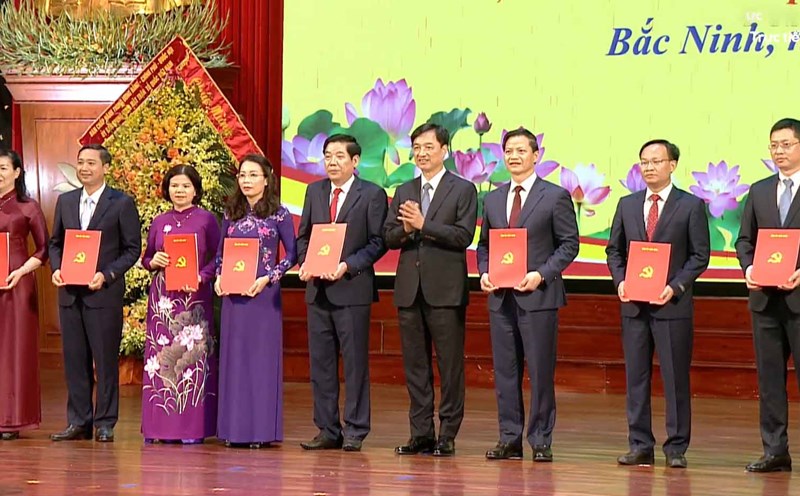Vinh Ho apartment complex is seriously degraded
Dong Da District (Hanoi City) has just held a conference to collect opinions on the detailed planning project for the renovation and reconstruction of Vinh Ho and surrounding collective housing areas at a scale of 1/500 in Thinh Quang and Trung Liet wards.
Vinh Ho collective consists of 36 buildings located in Thinh Quang (27 buildings) and Trung Liet (9 buildings) with a total of 1,938 apartments, a population of more than 14,000. The project's research scope is over 22 hectares, including 1,300 townhouses.
Dong Da District has coordinated with the Department of Planning and Architecture and the Hanoi Institute of Planning and Construction to research and develop a plan with the orientation of rebuilding 36 buildings into 40-storey buildings for on-site resettlement for people and reserving a part of the area for investors to do business in commercial services, without housing functions.
According to Lao Dong, after nearly 50 years of use, many items of the apartment complex have seriously degraded. The walls and stairs have many large cracks, the ceiling is peeling, revealing rusty steel core.

Ms. Ngo Thi Dung - a resident of Vinh Ho apartment complex said that she has been here for more than 20 years and has witnessed increasingly serious deterioration.
"The water pipes in many houses are broken. Every time it rains heavily, water leaks from the upper floors to the lower floors, directly affecting the lives of households. I really hope the house will be renovated soon to stabilize my life," Ms. Dung shared.
Mr. Vu Trong Son - a resident of Vinh Ho apartment complex - also expressed his agreement with the renovation policy. He believes that in the context of rapid urbanization, renovation is necessary to change the appearance of the urban area. However, he is also concerned that the simultaneous construction of high-rise buildings will increase the density of residents, which could overload the existing technical infrastructure system.
Concerns about compensation policies, infrastructure and planning
Speaking with Lao Dong, Mr. Truong Minh Quang - Head of the Economic, Infrastructure and Urban Affairs Department of Dong Da District - said that during the consultation process, most residents agreed with the renovation policy. However, there are still some opinions related to issues such as compensation policies, height of works after renovation, traffic and technical infrastructure in the area.
"Competition and support for residents are implemented according to current regulations, the first floor compensation coefficient K is 2, from the second floor and above, the coefficient K is 1.5. The average area of apartments after renovation is 70m2. However, many households expressed concern that after compensation, people would have difficulty paying for the remaining area without financial support," said Mr. Quang.
Regarding the difference in area, Mr. Quang said that the authorities are currently in the process of making a detailed plan to study and propose a solution suitable to reality. It is expected that within the next month, Dong Da District will complete the collection of community opinions, synthesize and report to the Hanoi People's Committee in mid-June.
Regarding concerns related to planning and population density, Associate Professor, Dr. Dao Ngoc Nghiem - Former Director of the Hanoi Department of Planning and Architecture, Vice President of the Vietnam Urban Planning and Development Association said that many people are interested in the project.
"Some people come to the site to ask how the specific planning is. I am researching the final plan but it has not been provided. There needs to be a scientific basis for detailed comments, he said.
Mr. Nghiem further analyzed: "People reduce the density of construction. In the context of climate change, construction density is a very important factor. Previously, the density was usually 70 - 80%, now it has decreased to less than 60% - that is the requirement. Regarding transportation, public transport has been arranged to solve infrastructure problems in apartment buildings, and parking lots have been built according to standards. Previously, only 2 - 4 households had one parking space, but now, each household has 2 parking spaces according to motorbike standards. Accordingly, there will be certain improvements.











